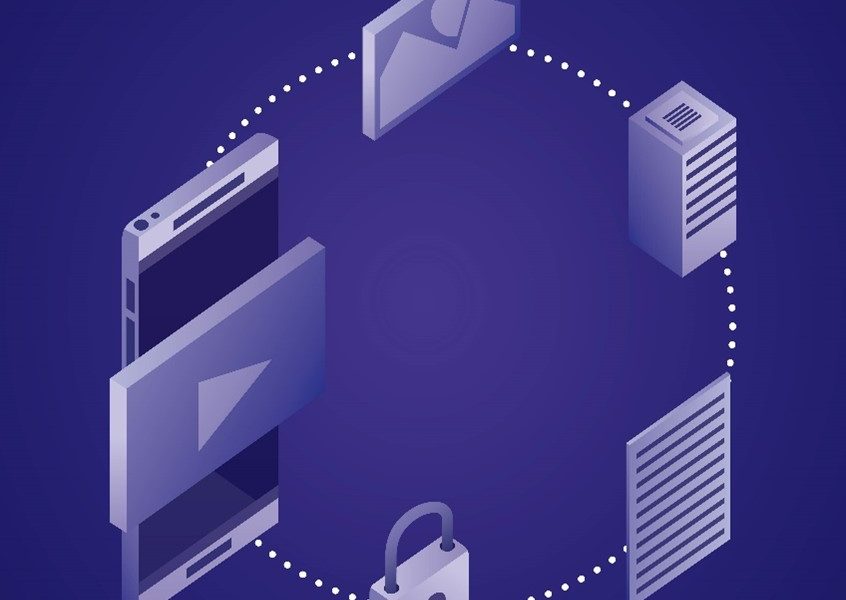I. Introduction
A. Brief Overview of ISO 27001 Certification
ISO 27001 Certification is an internationally recognized standard that outlines the requirements for an effective Information Security Management System (ISMS). It provides organizations with a framework to manage sensitive information systematically, ensuring its confidentiality, integrity, and availability. The certification helps organizations implement a risk-based approach to information security, enabling them to identify, assess, and mitigate risks associated with their information assets.
B. Importance of Information Security in Today’s Digital Landscape
In an era characterized by digital transformation and the increasing prevalence of cyber threats, the importance of information security cannot be overstated. Organizations face various risks, including data breaches, identity theft, and ransomware attacks, which can have devastating consequences, both financially and reputationally. With the growing reliance on technology and the internet, protecting sensitive data has become a priority for businesses of all sizes.
C. Purpose of the Blog: To Explore the Benefits and Steps to Achieve ISO 27001 Certification
This blog aims to provide a comprehensive overview of ISO 27001 Certification, including its definition, significance, key components, implementation steps, benefits, and challenges. By understanding the importance of ISO 27001 and how to achieve certification, organizations can enhance their information security posture and protect their valuable data assets.
II. What is ISO 27001 Certification?
A. Definition and Explanation of ISO 27001
ISO 27001 is the leading international standard that specifies the requirements for establishing, implementing, maintaining, and continually improving an ISMS. It is part of the ISO/IEC 27000 family of standards, which provide guidelines for various aspects of information security. The standard emphasizes a risk-based approach, allowing organizations to identify and manage their information security risks based on their specific context and needs.
B. Overview of the International Organization for Standardization (ISO)
The International Organization for Standardization (ISO) is an independent, non-governmental international organization that develops and publishes standards to ensure quality, safety, efficiency, and interoperability across various industries. ISO standards are widely recognized and adopted globally, providing organizations with frameworks to improve their operations and achieve consistency in quality and performance. ISO 27001 is one of the most prominent standards in the ISO portfolio, focusing specifically on information security management.
C. Key Objectives of ISO 27001: Protecting Information Assets
The primary objective of ISO 27001 is to protect information assets from unauthorized access, disclosure, alteration, and destruction. The standard aims to ensure that organizations implement appropriate security controls tailored to their risk environment. Key objectives include:
- Confidentiality: Ensuring that information is accessible only to authorized individuals.
- Integrity: Safeguarding the accuracy and completeness of information and processing methods.
- Availability: Ensuring that authorized users have access to information and associated assets when required.
III. The Importance of ISO 27001 Certification
A. Enhancing Information Security Management
Achieving ISO 27001 Certification enhances an organization’s information security management by establishing a structured approach to risk management. The certification process requires organizations to identify their information assets, assess associated risks, and implement appropriate controls to mitigate those risks. This structured approach helps organizations proactively manage security threats and protect sensitive information effectively.
B. Mitigating Risks Associated with Data Breaches
Data breaches can have severe consequences, including financial loss, legal liabilities, and reputational damage. ISO 27001 Certification helps organizations mitigate these risks by implementing a comprehensive framework for information security management. By identifying vulnerabilities and implementing controls, organizations can reduce the likelihood of data breaches and respond effectively in the event of a security incident.
C. Building Trust with Clients and Stakeholders
ISO 27001 Certification demonstrates an organization’s commitment to information security, fostering trust among clients and stakeholders. In today’s competitive landscape, clients are increasingly concerned about how organizations protect their data. Certification serves as a mark of quality, assuring customers that their information is handled with care and protected against security threats. This trust can lead to increased customer loyalty and improved business relationships.
D. Compliance with Regulatory Requirements
Many industries are subject to regulatory requirements regarding data protection and information security. ISO 27001 Certification helps organizations comply with these regulations by establishing a robust framework for managing information security. Compliance with legal and regulatory obligations not only avoids penalties but also enhances the organization’s reputation as a responsible entity committed to safeguarding data.
IV. Key Components of ISO 27001
A. Information Security Management System (ISMS)
An ISMS is the foundation of ISO 27001 Certification. It is a systematic approach to managing sensitive information, encompassing people, processes, and technology. The ISMS framework includes policies, procedures, and controls that organizations implement to protect their information assets. It ensures that information security is integrated into all aspects of the organization, from governance to operational practices.
B. Risk Assessment and Treatment
A crucial component of ISO 27001 is conducting a risk assessment to identify potential threats and vulnerabilities. Organizations must evaluate the risks associated with their information assets, determine the potential impact of security incidents, and prioritize risks based on their significance. Following the risk assessment, organizations must implement appropriate treatment measures to mitigate identified risks, ensuring that security controls align with their risk appetite.
C. Continuous Improvement and Monitoring
ISO 27001 emphasizes the importance of continuous improvement in information security management. Organizations are required to regularly monitor their ISMS, assess its effectiveness, and make necessary adjustments to address emerging threats and changes in the operational environment. Continuous improvement helps organizations stay agile and responsive to evolving security challenges.
D. Documented Information and Control Procedures
Documentation is essential in ISO 27001 to ensure consistency and accountability. Organizations must maintain documented information related to their ISMS, including policies, procedures, and records of risk assessments and audits. These documents serve as evidence of compliance and support effective communication among stakeholders. Control procedures must also be established to ensure that information security measures are implemented and adhered to consistently.
V. Steps to Achieve ISO 27001 Certification
A. Conducting a Gap Analysis
The first step in achieving ISO 27001 Certification is conducting a gap analysis to assess the current state of the organization’s information security practices against the requirements of the standard. This analysis helps identify areas that require improvement and provides a roadmap for achieving compliance.
B. Developing and Implementing an ISMS
Once the gap analysis is complete, organizations should develop and implement an ISMS tailored to their specific needs. This includes defining information security policies, establishing roles and responsibilities, and outlining procedures for risk assessment and treatment. Engaging employees and stakeholders in the development process ensures that the ISMS aligns with organizational culture and objectives.
C. Training and Engaging Employees
Employee training is crucial for the successful implementation of an ISMS. Organizations must provide training to ensure that employees understand their roles and responsibilities concerning information security. By fostering a culture of security awareness, organizations can empower employees to actively participate in safeguarding sensitive information.
D. Performing Internal Audits
Internal audits are essential for assessing the effectiveness of the ISMS and ensuring compliance with ISO 27001 requirements. Organizations should conduct regular audits to identify non-conformities, assess the implementation of controls, and evaluate the overall performance of the ISMS.
VI. Benefits of ISO 27001 Certification
A. Improved Data Protection and Security Measures
Achieving ISO 27001 Certification leads to improved data protection and security measures. Organizations implement robust controls to safeguard sensitive information, reducing the likelihood of data breaches and unauthorized access. This enhanced security posture helps organizations build resilience against cyber threats.
B. Enhanced Organizational Reputation and Market Competitiveness
ISO 27001 Certification enhances an organization’s reputation by demonstrating a commitment to information security. In a competitive market, certification can serve as a differentiator, attracting customers who prioritize data security. Organizations with ISO 27001 Certification often find it easier to secure contracts, partnerships, and business opportunities.
C. Increased Operational Efficiency and Risk Management
The structured approach provided by ISO 27001 leads to increased operational efficiency. Organizations streamline their processes for managing information security, reducing duplication of efforts and enhancing collaboration among teams. Additionally, effective risk management practices enable organizations to anticipate and respond to security threats proactively.
VII. Challenges in Implementing ISO 27001
A. Resource Allocation and Commitment
Implementing ISO 27001 requires a significant commitment of resources, including time, personnel, and finances. Organizations must allocate adequate resources to develop and maintain an effective ISMS, which can be challenging, especially for smaller businesses with limited budgets.
B. Keeping Up with Evolving Security Threats
The information security landscape is constantly evolving, with new threats emerging regularly. Organizations must stay informed about these threats and adapt their ISMS accordingly. This requires ongoing vigilance, training, and updates to security measures, which can be resource-intensive.
C. Ensuring Ongoing Compliance and Improvement
Achieving ISO 27001 Certification is not a one-time effort; it requires continuous improvement and compliance monitoring. Organizations must establish processes for regular reviews, audits, and updates to their ISMS to ensure that it remains effective in addressing emerging risks and changes in the operational environment.
VIII. Conclusion: The Value of ISO 27001 Certification
If your organization has not yet embraced ISO 27001, now is the time to prioritize this essential certification. By implementing and maintaining these standards, you can protect valuable information, enhance client trust, and position your business for sustainable growth in an increasingly security-conscious world.











